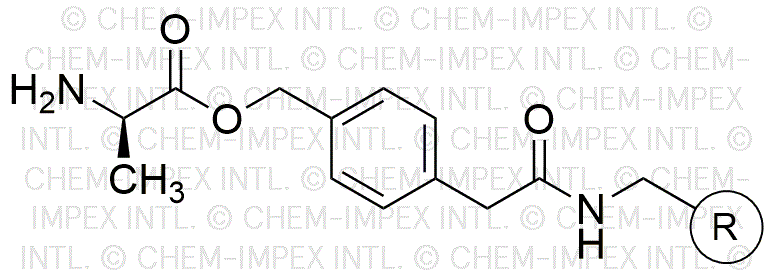Boc-D-alanine 4-oxymethylphenylacetamidomethyl is widely utilized in research focused on:
- Peptide Synthesis: This compound serves as a protective group in the synthesis of peptides, allowing for selective reactions and enhancing the yield of desired products.
- Drug Development: It plays a role in the design of pharmaceutical compounds, particularly in creating analogs of amino acids that can lead to new therapeutic agents.
- Bioconjugation: The compound is used in bioconjugation processes, facilitating the attachment of biomolecules to drugs or imaging agents, improving their efficacy and targeting.
- Research in Neuroscience: It aids in the study of neurotransmitter systems by acting as a building block for compounds that can modulate receptor activity.
- Material Science: The compound can be incorporated into polymers to create materials with specific properties, such as enhanced biocompatibility for medical devices.
Información general
Propiedades
Seguridad y normativas
Aplicaciones
Boc-D-alanine 4-oxymethylphenylacetamidomethyl is widely utilized in research focused on:
- Peptide Synthesis: This compound serves as a protective group in the synthesis of peptides, allowing for selective reactions and enhancing the yield of desired products.
- Drug Development: It plays a role in the design of pharmaceutical compounds, particularly in creating analogs of amino acids that can lead to new therapeutic agents.
- Bioconjugation: The compound is used in bioconjugation processes, facilitating the attachment of biomolecules to drugs or imaging agents, improving their efficacy and targeting.
- Research in Neuroscience: It aids in the study of neurotransmitter systems by acting as a building block for compounds that can modulate receptor activity.
- Material Science: The compound can be incorporated into polymers to create materials with specific properties, such as enhanced biocompatibility for medical devices.
Documentos
Hojas de datos de seguridad (HDS)
La SDS proporciona información de seguridad completa sobre la manipulación, el almacenamiento y la eliminación del producto.
Especificación del producto (PS)
La PS proporciona un desglose completo de las propiedades del producto, incluida la composición química, el estado físico, la pureza y los requisitos de almacenamiento. También detalla los rangos de calidad aceptables y las aplicaciones previstas del producto.
Certificados de análisis (COA)
Busque certificados de análisis (COA) ingresando el número de lote del producto. Los números de lote y de partida se pueden encontrar en la etiqueta de un producto después de las palabras "Lote" o "Lote".
Número de catálogo
Número de lote/lote
Certificados de origen (COO)
Este certificado de origen confirma el país en el que se fabricó el producto y también detalla los materiales y componentes utilizados en él y si se deriva de fuentes naturales, sintéticas u otras fuentes específicas. Este certificado puede ser necesario para cumplir con las normativas aduaneras, comerciales y regulatorias.
Número de catálogo
Número de lote/lote
Hojas de datos de seguridad (HDS)
La SDS proporciona información de seguridad completa sobre la manipulación, el almacenamiento y la eliminación del producto.
DownloadEspecificación del producto (PS)
La PS proporciona un desglose completo de las propiedades del producto, incluida la composición química, el estado físico, la pureza y los requisitos de almacenamiento. También detalla los rangos de calidad aceptables y las aplicaciones previstas del producto.
DownloadCertificados de análisis (COA)
Busque certificados de análisis (COA) ingresando el número de lote del producto. Los números de lote y de partida se pueden encontrar en la etiqueta de un producto después de las palabras "Lote" o "Lote".
Número de catálogo
Número de lote/lote
Certificados de origen (COO)
Este certificado de origen confirma el país en el que se fabricó el producto y también detalla los materiales y componentes utilizados en él y si se deriva de fuentes naturales, sintéticas u otras fuentes específicas. Este certificado puede ser necesario para cumplir con las normativas aduaneras, comerciales y regulatorias.

